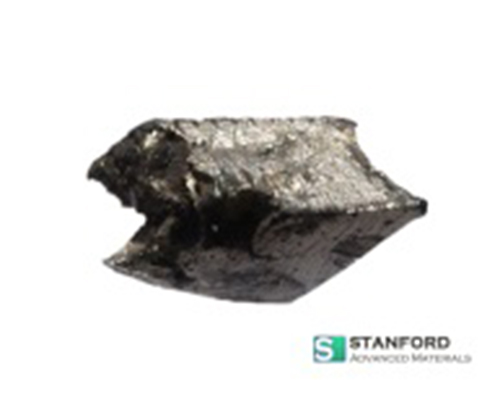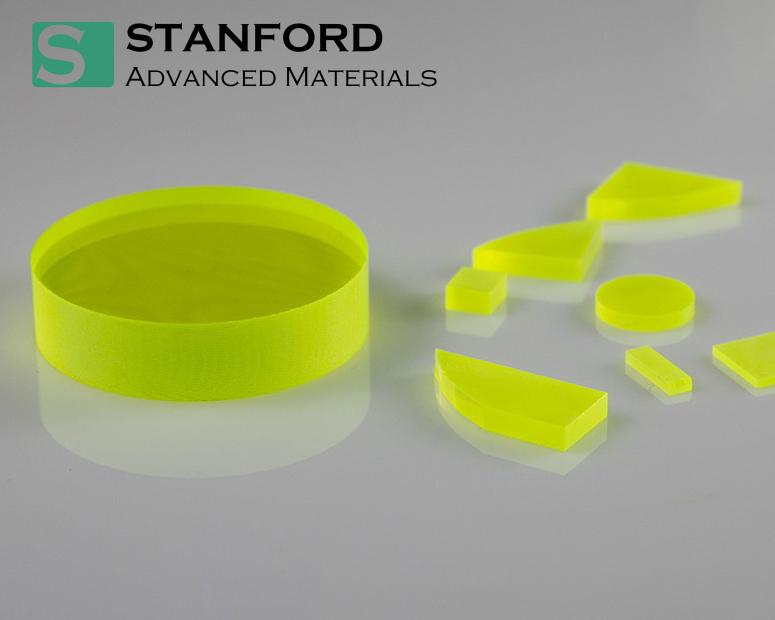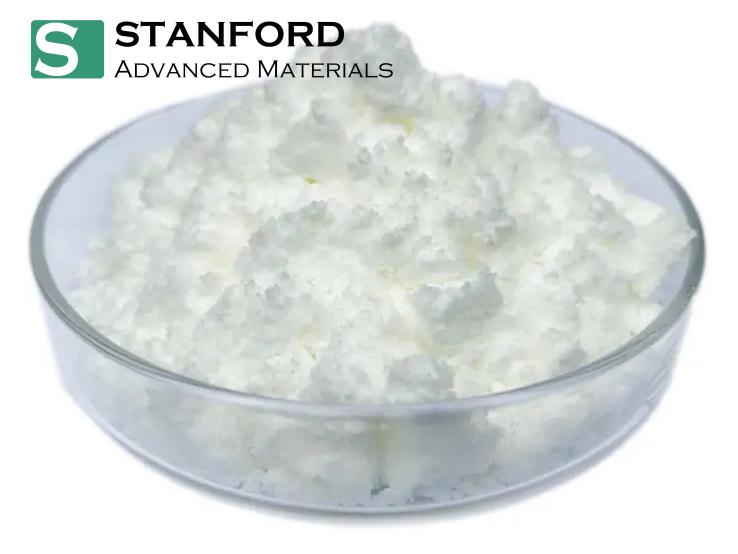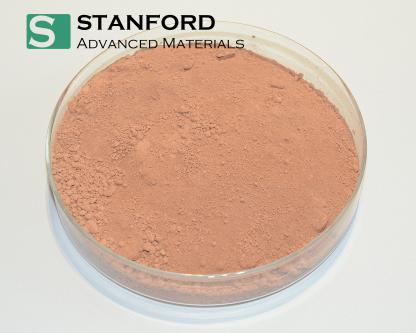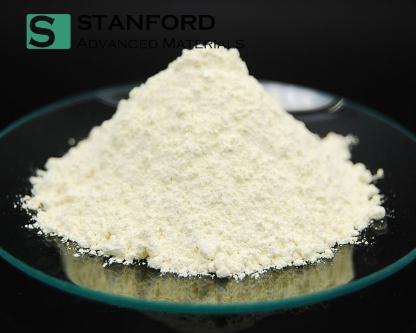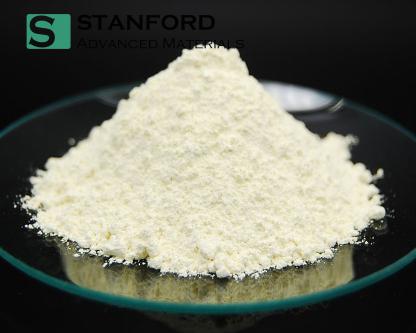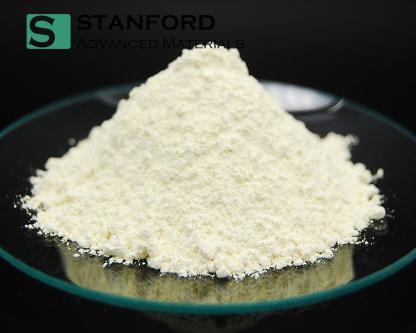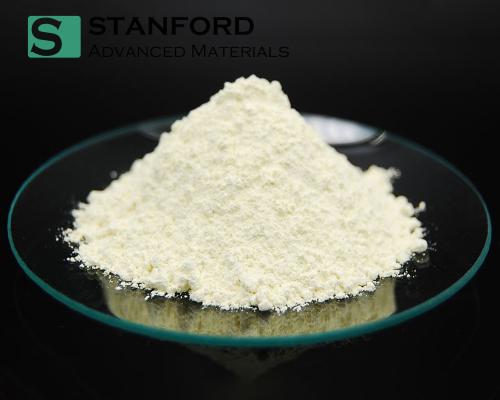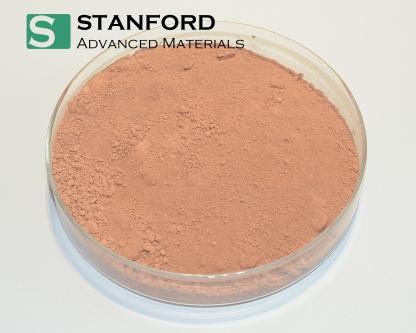- Catalog No.CE6677
- MaterialCeO2, Zr(Hf)O2, La2O3, Y2O3, Nd2O3
- Compositions40CeO2-50Zr(Hf)O2-4La2O3-2Y2O3-4Nd2O3
- AppearanceLight yellow powder
| Parameter | Value |
|---|---|
| Material | CeO₂, Zr(Hf)O₂, La₂O₃, Y₂O₃, Nd₂O₃ |
| Composition | 40CeO₂-50Zr(Hf)O₂-4La₂O₃-2Y₂O₃-4Nd₂O₃ |
| Appearance | Light yellow powder |
| Surface Area (Fresh) (m²/g) | 60-85 |
| Surface Area (Aged, 1000°C/4h) (m²/g) | >50 |
| Surface Area (Aged, 1100°C/4h) (m²/g) | >25 |
| D₅₀ (μm) | 3-12 |
| Theoretical Chemical Composition (%) | |
| Ingredient | CeO₂ |
| Content | 40 |
Note: The above product information is based on theoretical data. For specific requirements and detailed inquiries, please contact us.
Cerium-Zirconium-Lanthanum-Yttrium-Neodymium Catalysts (40CeO₂-50Zr(Hf)O₂-4La₂O₃-2Y₂O₃-4Nd₂O₃) are advanced mixed oxide materials designed to optimize catalytic performance in high-temperature and redox-intensive environments. The core component, cerium oxide (CeO₂), provides outstanding oxygen storage and release capacity due to its reversible Ce⁴⁺/Ce³⁺ redox cycle. This enables the catalyst to act as an effective oxygen buffer, which is critical in maintaining optimal air-fuel ratios in automotive three-way catalytic converters.
Zirconium or hafnium oxide (Zr(Hf)O₂) contributes to enhanced thermal stability and helps prevent sintering of the catalyst particles at high temperatures, which is essential for long-term durability. The incorporation of lanthanum oxide (La₂O₃) increases the catalyst’s surface area and improves thermal resistance. Yttrium oxide (Y₂O₃) adds structural robustness, promoting phase stability and resistance to thermal shock. Neodymium oxide (Nd₂O₃) plays a key role in enhancing redox properties and stabilizing the oxygen vacancies, further improving oxygen mobility within the catalyst structure.
Together, these oxides form a homogeneous solid solution that exhibits superior catalytic activity, excellent structural stability under cyclic redox conditions, and strong resistance to sulfur poisoning and deactivation. These properties make the catalyst ideal for emission control, fuel reforming, and industrial oxidation-reduction reactions where long-term performance and efficiency are critical.
Our products are packaged in customized cartons of various sizes based on the material dimensions. Small items are securely packed in PP (polypropylene) boxes, while larger items are placed in custom wooden crates. We ensure strict adherence to packaging customization and the use of appropriate cushioning materials to provide optimal protection during transportation.
Packaging Options:
Please review the packaging details provided for your reference. For special packaging needs, feel free to contact us.
Please refer to the SMC testing procedures for detailed information.
Q1. What is this catalyst used for?
A: It is primarily used in automotive catalytic converters, industrial emission control, fuel reforming, and oxidation-reduction reactions due to its high oxygen storage capacity and thermal stability.
Q2. Why is the combination of multiple rare earth oxides important?
A: Each oxide plays a specific role—cerium provides redox activity, zirconium (or hafnium) adds thermal resistance, while lanthanum, yttrium, and neodymium enhance structural integrity, surface area, and long-term durability.
Q3. What makes this catalyst better than standard cerium-zirconium systems?
A: The addition of La₂O₃, Y₂O₃, and Nd₂O₃ improves resistance to thermal sintering, enhances redox cycling, and increases surface area, which boosts catalytic performance under harsh conditions.
| Property/Catalyst | Ce-Zr-La-Y-Nd (40-50-4-2-4) | Ce-Zr-Y (45-50-5) | Ce-Zr-Al (50-45-5) | Ce-Zr-Pr (50-45-5) | ZrO₂-Y₂O₃ (Industrial Grade) |
|---|---|---|---|---|---|
| Composition (wt%) | CeO₂:40, ZrO₂/HfO₂:50, La₂O₃:4, Y₂O₃:2, Nd₂O₃:4 | CeO₂:45, ZrO₂:50, Y₂O₃:5 | CeO₂:50, ZrO₂:45, Al₂O₃:5 | CeO₂:50, ZrO₂:45, Pr₆O₁₁:5 | ZrO₂:80, Y₂O₃:20 |
| Oxygen Storage Capacity (OSC, μmol O₂/g) | 700-850 | 450-550 | 300-400 | 550-700 | Not Applicable |
| Thermal Stability (°C) | 1050-1150 | 900-1000 | 800-900 | 950-1050 | Stable up to 1400°C |
| Light-off Temperature T50 (°C) | 220-240 | 280-320 | 300-350 | 250-300 | Not Applicable |
| Catalytic Efficiency | High | Moderate | Low | Moderate | Variable |
The Cerium-Zirconium-Lanthanum-Yttrium-Neodymium Catalyst (40CeO₂-50Zr(Hf)O₂-4La₂O₃-2Y₂O₃-4Nd₂O₃) is typically synthesized using a co-precipitation method. The process involves the following steps:
Preparation of Aqueous Solutions:
Cerium, zirconium (or hafnium), lanthanum, yttrium, and neodymium salts—usually nitrates—are dissolved in water in stoichiometric proportions.
Reaction with a Base:
A base such as ammonium hydroxide or sodium carbonate is added under controlled pH and stirring conditions to precipitate the metal hydroxides or carbonates.
Precipitation:
The reaction mixture is allowed to precipitate, forming a homogeneous gel or precipitate of the mixed hydroxides/carbonates.
Aging:
The precipitate is aged to enhance crystallinity and homogeneity, ensuring uniform distribution of all metal components.
Filtration and Washing:
The aged precipitate is filtered and thoroughly washed to remove residual ions and impurities.
Drying:
The washed precursor is dried at moderate temperatures to remove moisture content.
Calcination:
The dried precursor is calcined at high temperatures (typically between 500°C and 800°C) to form a thermally stable, homogeneous mixed oxide with enhanced oxygen storage capacity, redox activity, and structural integrity.
This method yields a high-purity, nanostructured cerium-zirconium-lanthanum-yttrium-neodymium oxide with significant surface area and porosity, making it suitable for various high-performance catalytic applications.
To ensure the quality and performance of Cerium-Zirconium-Lanthanum-Yttrium-Neodymium Catalysts, the following characterization techniques are employed:
X-ray Diffraction (XRD):
Determines the crystalline structure and phase composition of the catalyst, ensuring the formation of a homogeneous mixed oxide phase.
Scanning Electron Microscopy (SEM):
Evaluates the morphology, particle size distribution, and surface characteristics of the catalyst particles.
Transmission Electron Microscopy (TEM):
Provides detailed insights into the internal structure and nanoscale features of the catalyst.
Brunauer-Emmett-Teller (BET) Surface Area Analysis:
Measures the specific surface area, which is critical for catalytic activity and oxygen storage capacity.
Thermogravimetric Analysis (TGA):
Assesses the thermal stability and weight changes during heating, indicating decomposition temperatures and stability under operating conditions.
Inductively Coupled Plasma Mass Spectrometry (ICP-MS):
Ensures precise determination of the elemental composition and purity of the catalyst.
Fourier-Transform Infrared Spectroscopy (FTIR):
Identifies functional groups and verifies the structural integrity of the mixed oxides.
Temperature-Programmed Reduction (TPR):
Evaluates the redox properties and oxygen mobility within the catalyst, essential for its performance in catalytic cycles.
Surface Area and Pore Volume Analysis:
Determines the porosity and surface characteristics, which are vital for catalytic activity and durability.
These comprehensive characterization methods ensure that the Cerium-Zirconium-Lanthanum-Yttrium-Neodymium Catalysts meet the highest standards required for their diverse applications in automotive emission control, industrial catalysis, and energy systems.
